
Intro
Knitting is actually one of the most important part of needle work. We see the use of knitting in various garments of our daily use. We also use needles for knitting which is called knitting needles. Today I will discuss a basic topic of knitting in this needle work Monday community because those who are involved in knitting may be do knitting but do not know the basics related to it. After knitting, two different sides are made on each side of the fabric, and they are called by different names. Many people may not have an idea about this so I will try to explain in detail in today's post to clear this issue.
Technical Face and Technical Back
After knitting, two types of loops are made on both sides of the fabric. If you take a closer look at the picture below, you can see some part of the loop on one side and the rest on the other side is visible. The first one is called Technical face side and the second one is the Technical back side. In fact, these two sides are opposite to each other of a fabric. In other words, if you look at the same cloth from the front, it will look like the picture on the left side and if you look at it from the back, it will look like the picture on the right side. So, the main thing is that after knitting, one side of the fabric will look like the first picture (left side) and the other side will look like the second picture (right side).

If we take a closer look at the left side picture below, we can see that the upper part and the lower part of a loop are not visible here. Only the legs of the loop can be seen. As you can see in the picture on the right, the legs are laid back but the curved parts at the top and the curved parts at the bottom of a loop are more visible. So if the legs of the loop are seen on any side of the cloth or the shape like the English letter V is seen then It is called technical face side and on the other hand if the heads of the loop or the curved heads (arc shape) are seen on any side of the cloth then it is called technical back side.

This means that if we look at a piece of cloth very closely from the front, then if we see some English V-shaped letters, then we have to understand that it is the face side of the cloth and if we see some arc shape, then we have to understand that it is the back side of the cloth. Below, I show some pictures taken from the cloth. After knitting, if you look closely, you can see such a shape on the side of the cloth. By looking at the picture below you can understand what it is like to see the technical face or technical back in the cloth. This effect is more pronounced in the case of high GSM fabrics i.e. sweater knitting than in low GSM fabrics i.e. apparel used fabrics.
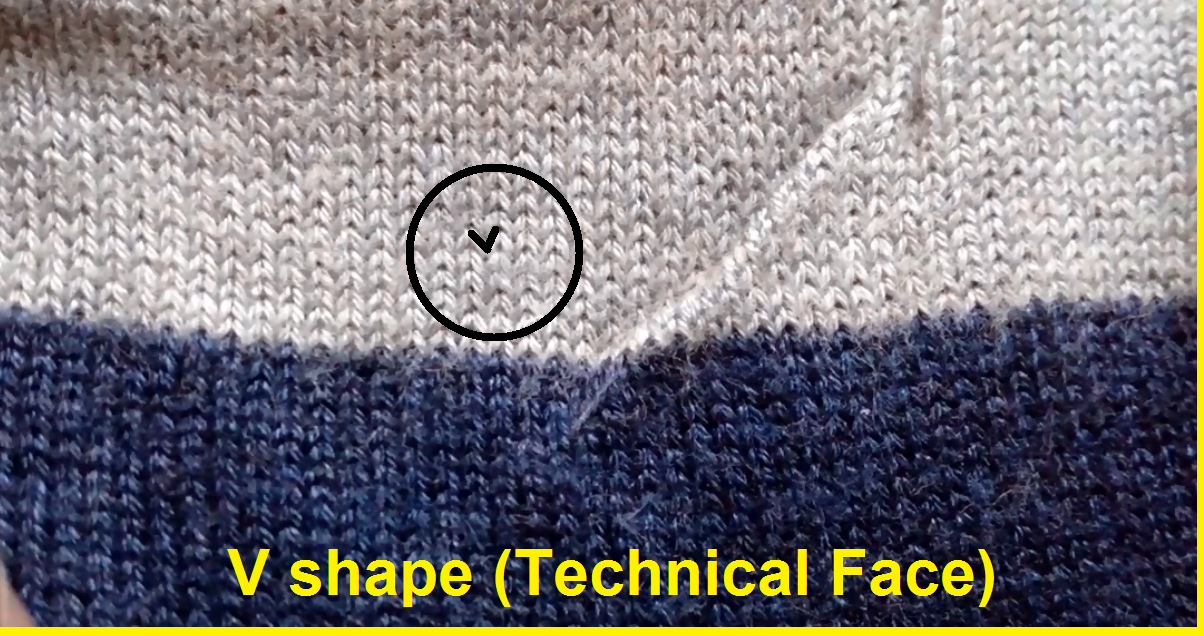
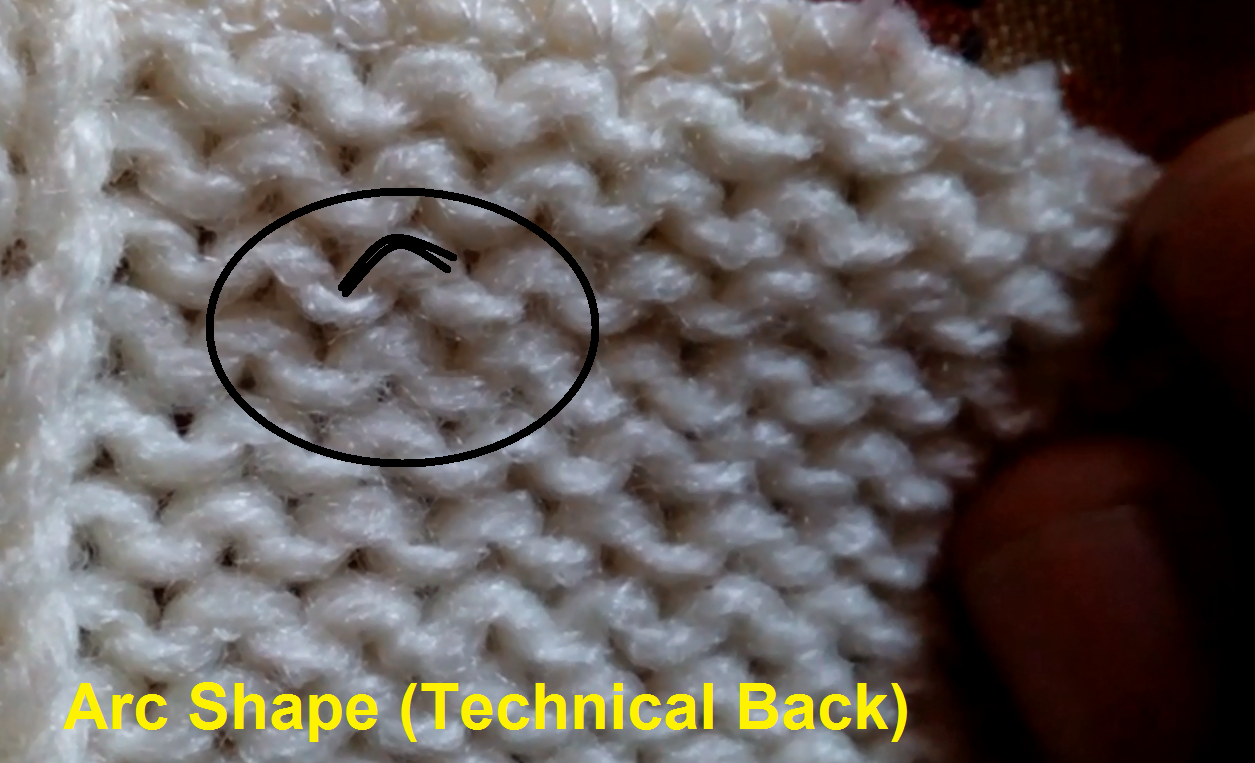
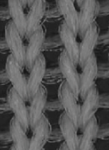
Close view of T.Face
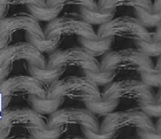
Close view of T.Back
How it differs from Garments or Apparel
Now if we take a closer look, we will realize that the technical face and back are different and each is beautiful in their shape. So, for somebody, the back side may look more beautiful than the face side. If he/she wants, he/she can sew this backside with the outside of the apparel or garments, then the technical backside will become the face of the garments. Since the back side loop can also become a face by going to the garments, so we call this face as technical face. One of the main reasons to say technical is that it is technical in terms of making or knitting. In case of garments, the side that is on the outside of the apparel is called the face, but in the case of knitting, where we see the V-shape, it is technically the back and where we see the arc shape, it is technically the face.
Final Words
Variations in the method of knitting, such as single jersey and double jersey, have some fabrics that can have a technical face or technical back on both sides. However, in a single jersey, there is a difference between the two sides, that is, the technical face on one side and the technical back on the other side. I will discuss these issues in detail later in another post. So far today.
I hope you have got an idea about one of the basics of knitting, the topic of technical face or technical back through today's post.
I have a complete video on this subject in my own YouTube channel in Bengali. Although many do not understand Bengali, anyone can take a look if they want.
Be creative and make some needle works.
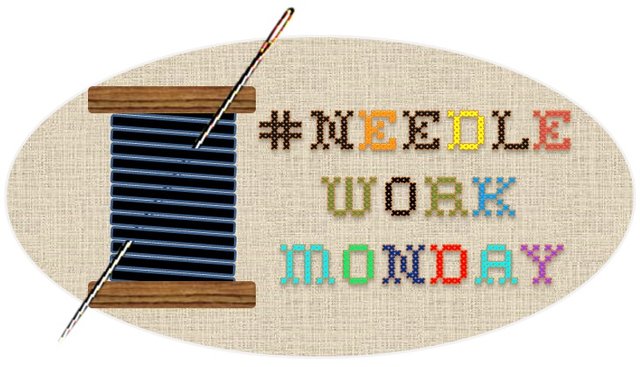
Thanks for stopping by.
Thanks to @crosheille for initiating such a good community
Who I am:
I am lecturer of Textile Engineering in Bangladesh. I love Textile and its related accessories. Being a lecturer on Fabric Manufacturing, I need to perform knitting and weaving activities regularly. I stay with needle and textile machineries. Recently I have found this amazing needle work community. Hopefully I shall share my needle works which I love to do to this community.
So, in this community I shall show one after one about my needle work. As a Textile Engineer, I need to knit several fabrics with knitting machine by the help of needle. Hopefully I shall show one after one of those knitting, crochet and weaving works from both manual and mechanical.
I want to express my ideas and learnings to this community so that anyone can be benefited from me. I blog in YouTube, DTube and Hive on Textile, Online Money making and Random topics. I love to capture Natural Photography. I am always a learner and wants to go to the moon with this platform.

Upvote, Resteem and Follow me on hive @engrsayful
Find me on social media
Follow me on DTube
Follow me on Youtube
Follow me on ThreeSpeak
Follow me on Facebook
Follow me on Twitter
This was so good of a read! Crocheting is my main craft as it came pretty easy to me. Knitting on the other hand - I am still trying to understand it .
I appreciate your explanations of the technical face and back because sometimes when I’m knitting I don’t know the difference (depending on which stitch I’m trying).
I think it’s always good to learn and understand the technical terms so that as we are making our projects we can clearly recognize mistakes, know how to fix them and be able to maneuver our needles in a way that will get us the results we are looking for.
It really helped having the photos of actual knitted garments. 👌🏽
Thank you so much for sharing this week and being apart of this community. It’s really a pleasure reading your posts and learning :)
Thank you very much for reading my post. I have tried my level best to explain with real life example of apparels. It's very much pleasure for me that you have found it useful. I am glad. Personally I want to thank you again for arranging this community
Absolutely! We love learning in this community ;)
You are very welcome. It was a pleasure making it available for all needle lovers ~
Hello @engrsayful! Your post was selected by our staff on behalf of the OCD Community Incubation Program and has received an OCD upvote! Congratulations!!! Please keep sharing these quality posts :)
Written by @crosheille for the NeedleWorkMonday Community ~
Thank you for sharing this amazing post on HIVE!
Your content got selected by our fellow curator @deepu7 & you just received a little thank you via an upvote from our non-profit curation initiative!
You will be featured in one of our recurring curation compilations and on our pinterest boards! Both are aiming to offer you a stage to widen your audience within and outside of the DIY scene of hive.
Join the official DIYHub community on HIVE and show us more of your amazing work and feel free to connect with us and other DIYers via our discord server!
If you want to support our goal to motivate other DIY/art/music/homesteading/... creators just delegate to us and earn 100% of your curation rewards!
Stay creative & hive on!
I learned to knit at school at a young age, but we were never taught the "technical" side - only the how, not the why. Since you need to understand these things if you want to hand knit more difficult things or change patterns, I had to search for this information. Such posts would have been a help.
I am glad that you found it useful.